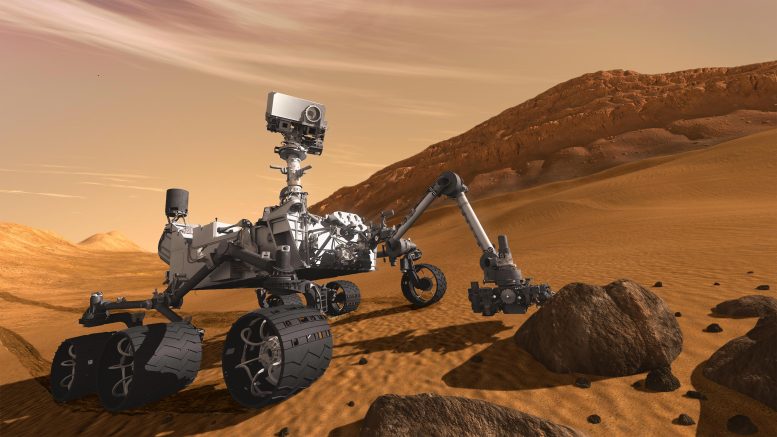
In this artist’s picture, the rover examines a rock on Mars with a set of tools at the end of the rover’s arm, which extends about 2 meters (7 feet). Two instruments on the arm can study rocks up close. Also, a drill can collect sample material from inside of rocks and a scoop can pick up samples of soil. The arm can sieve the samples and deliver fine powder to instruments inside the rover for thorough analysis. Credit: NASA/JPL-Caltech
Engineers have discovered and corrected the computer reset that occurred two months ago on NASA’s Mars Science Laboratory. Based on trials conducted on a test computer, the mission team modified the register configuration resulting in a successful software update.
Engineers have found the root cause of a computer reset that occurred two months ago on NASA’s Mars Science Laboratory and have determined how to correct it.
The fix involves changing how certain unused data-holding locations, called registers, are configured in the memory management of the type of computer chip used on the spacecraft. Billions of runs on a test computer with the modified register configuration yielded no repeat of the reset behavior. The mission team made this software change on the spacecraft’s computer last week and confirmed this week that the update is successful.
The reset occurred on November 29, 2011, three days after launch, during the use of the craft’s star scanner. The cause has been identified as a previously unknown design idiosyncrasy in the memory management unit of the Mars Science Laboratory computer processor. In rare sets of circumstances unique to how this mission uses the processor, cache access errors could occur, resulting in instructions not being executed properly. This is what happened on the spacecraft on November 29.
“Good detective work on understanding why the reset occurred has yielded a way to prevent it from occurring again,” said Mars Science Laboratory Deputy Project Manager Richard Cook of NASA’s Jet Propulsion Laboratory, Pasadena, California. “The successful resolution of this problem was the outcome of productive teamwork by engineers at the computer manufacturer and JPL.”
The Mars-bound spacecraft performed a brief alignment activity using its star scanner and sun sensor on Jan. 26. During the alignment observations, the star scanner detected Mars.
“Our target is in view,” said JPL’s Steve Collins, attitude control subsystem engineer for Mars Science Laboratory’s cruise from Earth to Mars.
The spacecraft began normal use of its star tracker and true celestial navigation this week after its software update.
The Mars Science Laboratory mission will use its car-size rover, Curiosity, to investigate whether the selected region on Mars inside Gale Crater has offered environmental conditions favorable for supporting microbial life and favorable for preserving clues about whether life existed. Curiosity will land on Mars on August 6, 2012, Universal Time and Eastern Daylight Time (evening of August 5, Pacific Daylight Time).
The spacecraft’s cruise-stage solar array is producing 704 watts. The telecommunications rates are 1 kilobit per second for uplink and 800 bits per second for downlink. The spacecraft is spinning at 1.97 rotations per minute.
As of 9 a.m. PST (noon EST, or 1700 Universal Time) on Friday, February 10, the spacecraft will have traveled 127 million miles (205 million kilometers) of its 352-million-mile (567-million-kilometer) flight to Mars. It will be moving at about 17,800 miles per hour (28,600 kilometers per hour) relative to Earth and at about 63,700 mph (102,500 kilometers per hour) relative to the sun.


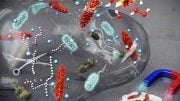

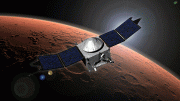
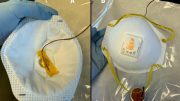

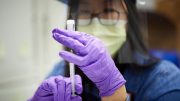
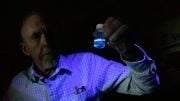
Be the first to comment on "Engineers Resolve Mars Science Laboratory Computer Issue"